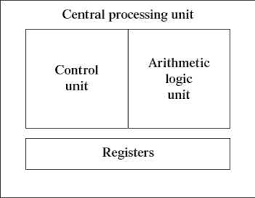Everything You Need to Know About ALU
The control unit acts as an intermediary that decodes the instructions sent to the processor, tells what to do by giving a control signal to other units such as the arithmetic logic unit (below), and then sends the processed data back to memory. Let’s understand what is the full form of CPU?
Arithmetic Reasoning Unit (ALU)
An arithmetic logic unit (ALU) is a digital circuit inside a processor that handles arithmetic and logical operations by loading data from an input register.After providing the ALU with instructions on the operation performed by the control unit, in cpu full form in computer the ALU completes them by connecting a number of transistors, and then stores the results in the output register.The control unit will then move this data to memory.
To function properly, the CPU system relies on clocks, memory, secondary storage and data and address buses.Smaller devices such as mobile phones, calculators, integrated gaming systems and tablets use smaller processors called ARM CPUs to accommodate their reduced size and space.The CPU is the heart and mind of the computer. It receives data input, executes notifications and processes information. It communicates with input / output (I / O) devices, which send and receive data to the CPU.
In addition, microprocessors have an internal bus for communicating with internal cache memory, called a backside bus. The main bus for transferring data to and from the CPU, memory, chipset and AGP socket is called the front bus.The cpu full form has internal memory units, called registers. This register contains the data, notifications, counters and addresses used in the ALU information process.
Some computers use two or more processors. These have different physical microprocessors located side by side on the same board or on different boards. Each CPU has an independent interface, a separate cache and a separate path for the system front-side bus.Multiple processors are ideal for intensive parallel tasks that require multitasking. Multicore CPUs are also common, with multiple CPUs in one chip.
Since the first microprocessor was released by Intel in November 1971, CPUs have multiplied their computing power.The oldest Intel 4004 processor performs only 60,000 operations per second, while the modern Intel Pentium processor can run approximately 188,000,000 notifications per second.
The central processing unit (CPU), the main component of any digital computer system, usually consists of the main memory, the control unit, and the arithmetic-logic unit. It forms the physical heart of the entire computer system; Various peripheral devices are connected to it, including input / output devices and auxiliary storage units. In modern computers, the CPU is built on an integrated circuit chip called a microprocessor.
The control unit of the central processing unit controls and integrates the operation of the computer. It selects instructions from the main memory in the correct order and retrieves and interprets them so that other functional elements of the system can be activated at the right time to perform their respective functions. All input data is transferred from the main memory to the arithmetic-reasoning unit for processing, which includes four basic arithmetic operations (i.e., addition, subtraction, multiplication and division) and some logic operations such as comparison and selection of data. A viable option based on the desired problem-solving process or predefined decision criteria.
Computer chip. Computer. Holding hands computer chip. Central Processing Unit (CPU). History & Society, Science & Technology, Microchip, Microprocessor Motherboard Computer Circuit BoardThe CPU provides the circuit that implements the computer's instruction set - its machine language. It consists of an arithmetic-logic unit (ALU) and a control circuit. ALU performs basic arithmetic and logic operations, and the control department determines the order of operations.



Comments
Post a Comment